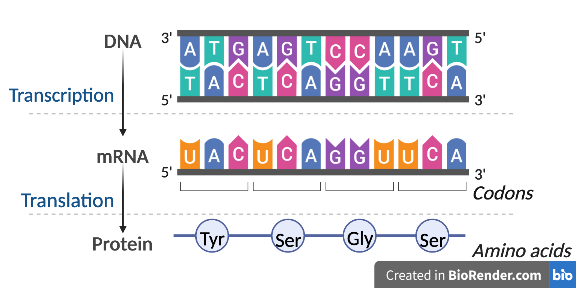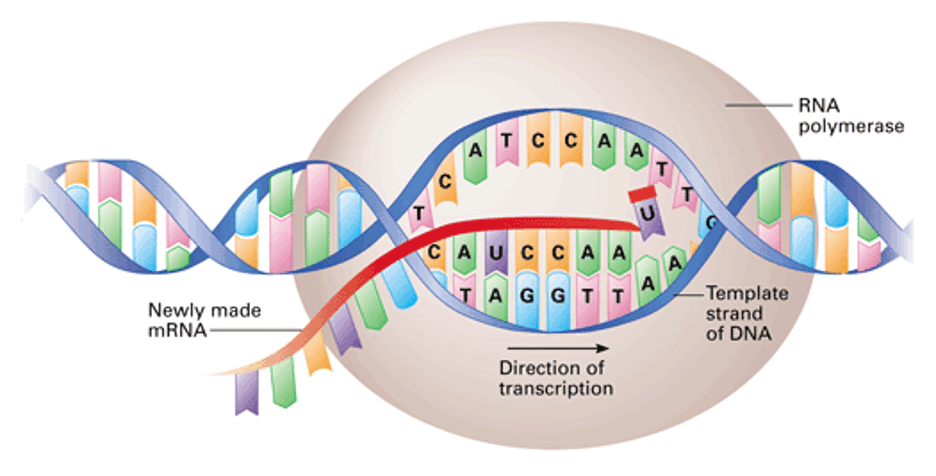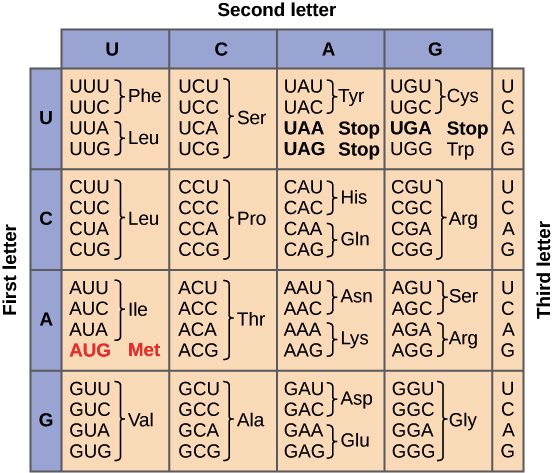FLOW OF INFORMATION IN THE CELL
FLOW OF INFORMATION IN A CELL
DNA ——>mRNA ——>Protein
The flow of information in a cell proceeds from DNA to mRNA to protein. Flow of information is the central dogma of biology. A dogma is a principle or set of principles laid down by an authority as incontrovertibly true. Flow of information in a cell explains how DNA becomes E. coli, a Herpes virus, Giardia lamblia, or you. The process of DNA being converted to mRNA is known as transcription. The process of mRNA being converted to protein is known as translation. Prokaryotes transcribe and translate genes that they need the products of. For example, if there is no lactose available a prokaryote would not transcribe and translate the genes to produce enzymes needed to catabolize lactose.
FLOW OF INFORMATION IN A CELL

TRANSCRIPTION
In prokaryotes transcription takes place in the cytoplasm. In eukaryotes transcription takes place in the nucleus. Only one of the two DNA strands will serve as a template in transcription; mRNA is single stranded. Helicase untwists and unzips the DNA. Transcription of the gene begins at the start of the gene (the promoter). RNA polymerase moves along the DNA strand that is serving as the template. RNA polymerase adds complementary nucleotides (50 nucleotides per second) and builds the mRNA strand. Remember the sugar in RNA is ribose and in RNA A pairs with U and C pairs with G. Transcription terminates at the end of the gene. mRNA is released, the DNA re-zips and re-twists. The antibiotic rifampin blocks RNA polymerase preventing transcription.

QuIZ TIME!
translation
In prokaryotes (and eukaryotes) translation takes place in the cytoplasm. We will need a ribosome; ribosomes are the site of protein synthesis. Prokaryotes have 70s ribosomes, each consisting of a small (30s) and a large (50s) subunit. Eukaryotes have 80s ribosomes, each consisting of a small (40s) and large (60s) subunit. We will also need tRNA to bring in amino acids; amino acids are the building blocks of protein. The ribosome moves along the mRNA. mRNA is “read” 3 nucleotides (or a codon) at a time. A codon is 3 nucleotides on mRNA; each codon specifies an amino acid. We must put the amino acids in the proper order to build the correct protein. An anticodon is 3 nucleotides on tRNA. One end of the tRNA molecules is the anticodon, the other end carries an amino acid. Complementarity between the codon on mRNA and the anticodon on tRNA gets the amino acids in the correct order and therefore builds the correct protein. The antibiotics streptomycin and tetracycline bind to 30s subunit of prokaryotic ribosomes preventing translation.

http://www.youtube.com/watch?v=41_Ne5mS2ls
There is degeneracy or redundancy to the genetic code. This means that more than one codon encodes for the same amino acid. Basically, redundancy or degeneracy of the genetic code means you might be able to make a mistake and get away with it, as long as the mistake is in the 3rd position of the mRNA codon. The 3rd position of the codon is known as the wobble position. If a mistake is made in DNA replication as long as the mistake is in the 3rd position the correct protein will be built. For example, the codons that code for the amino acid Proline (Pro) include CCU, CCC, CCA, and CCG.

